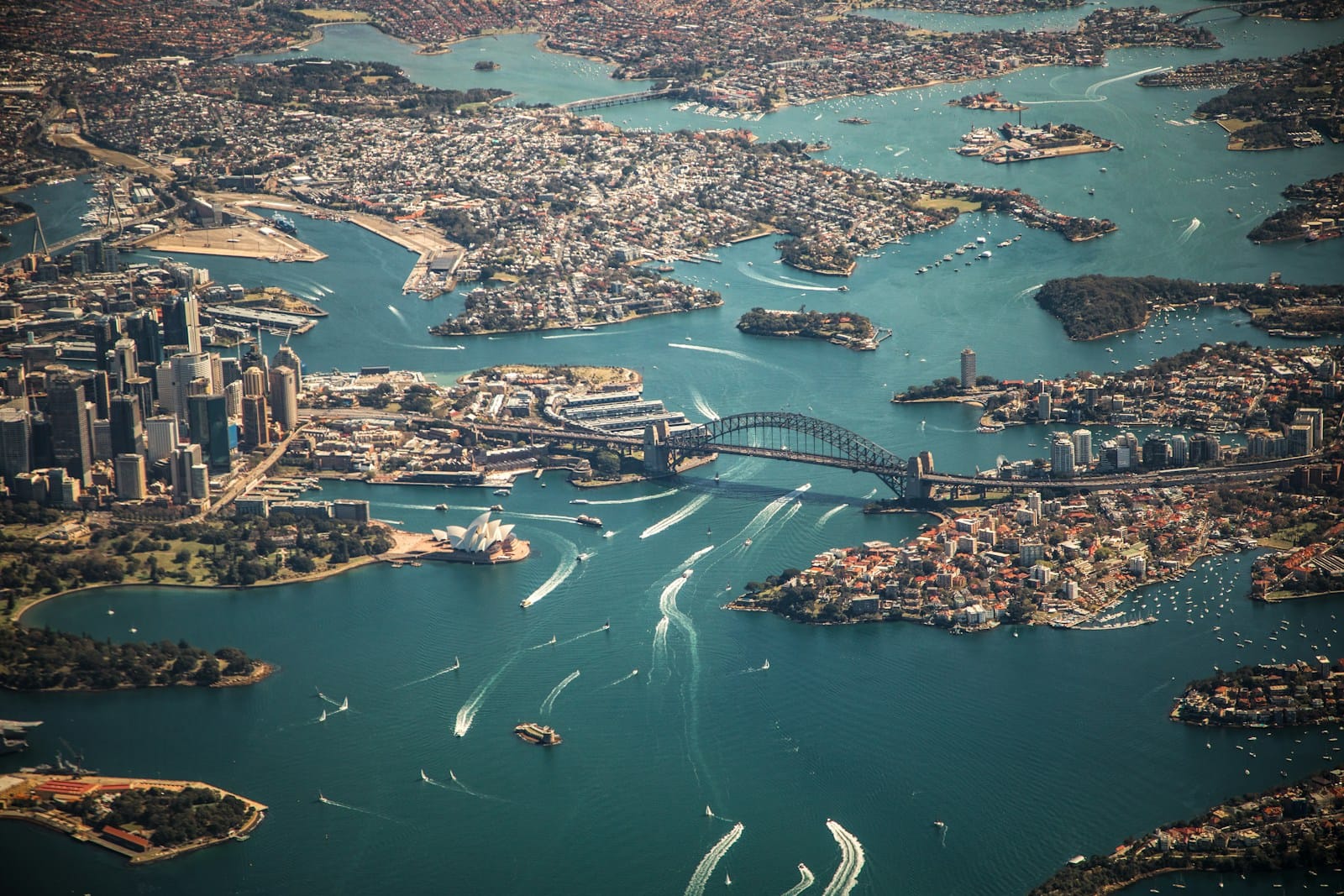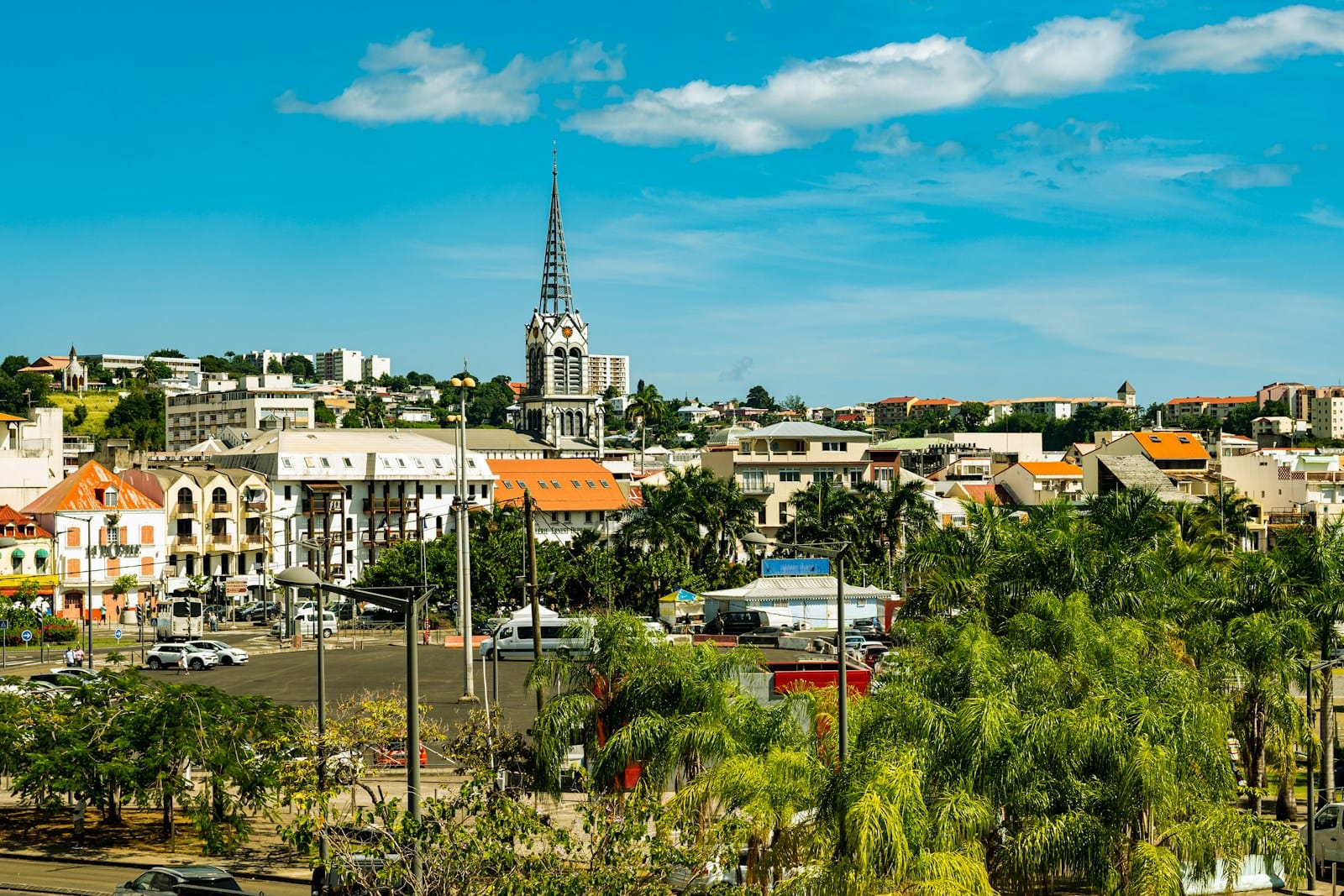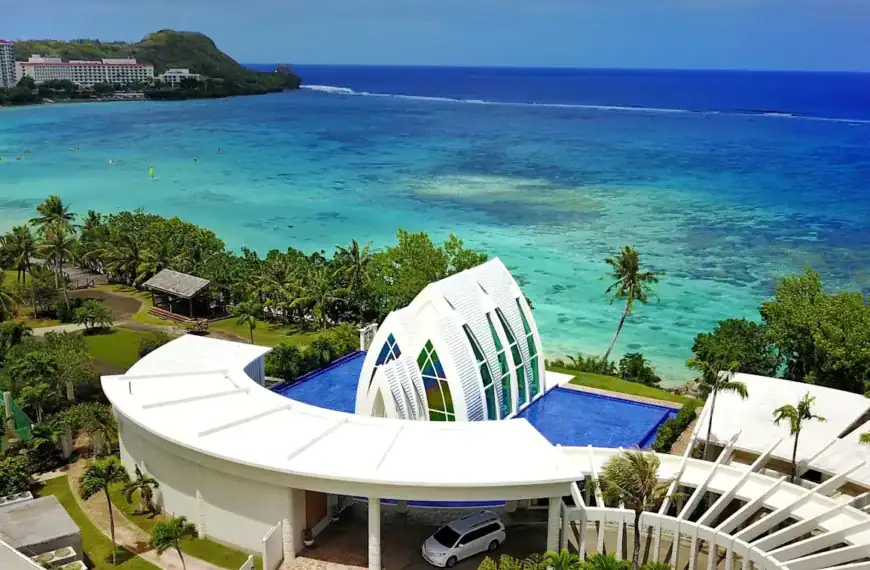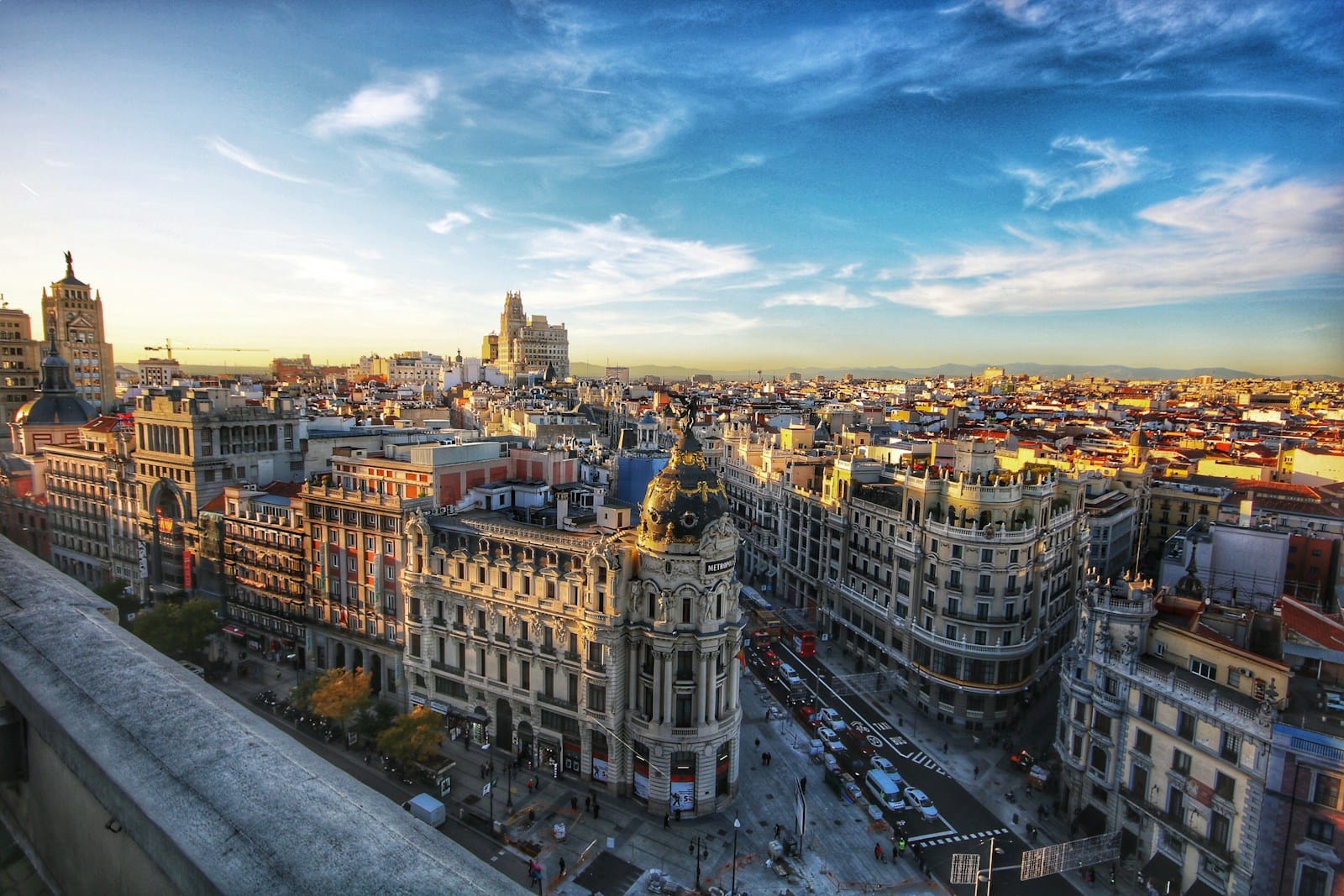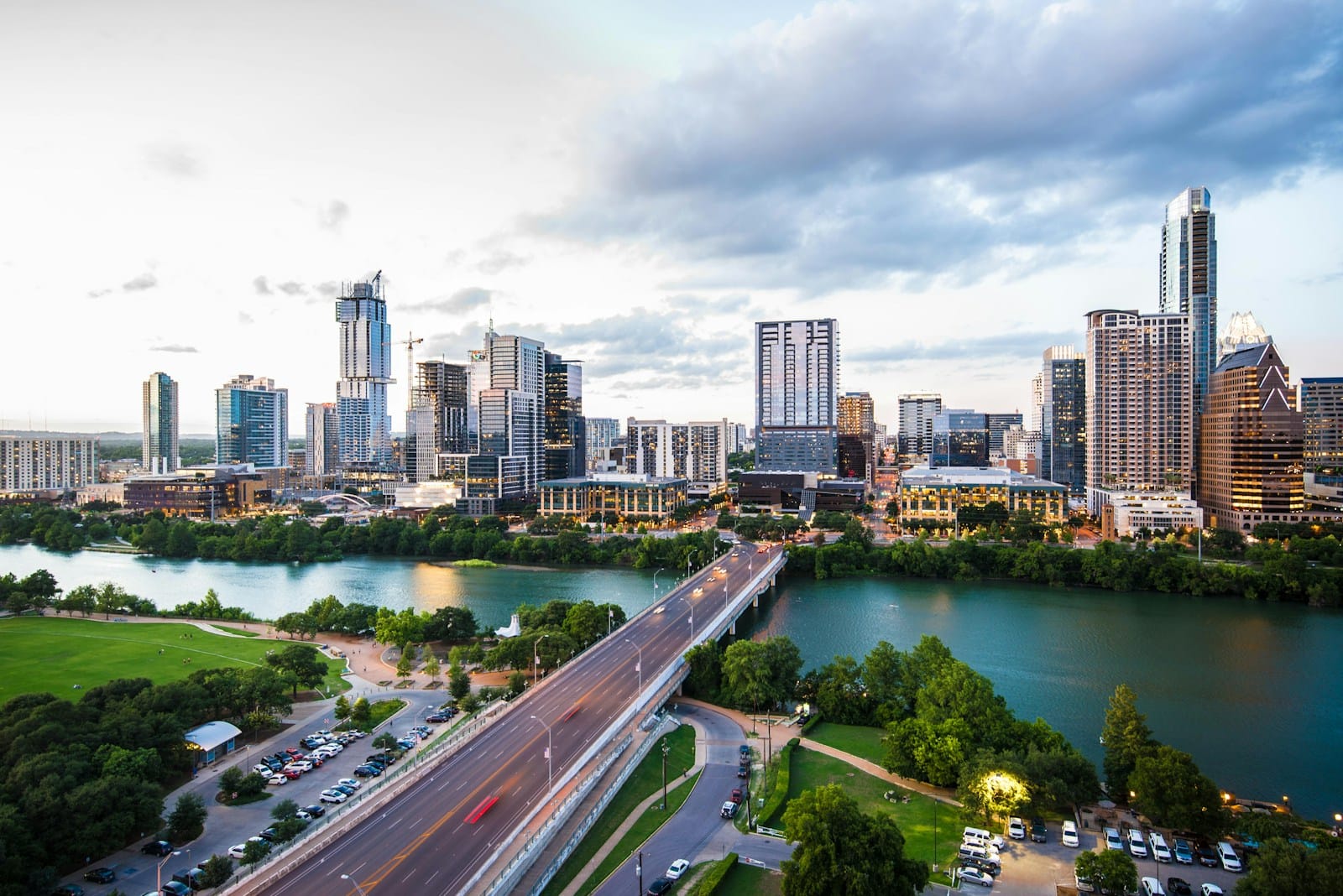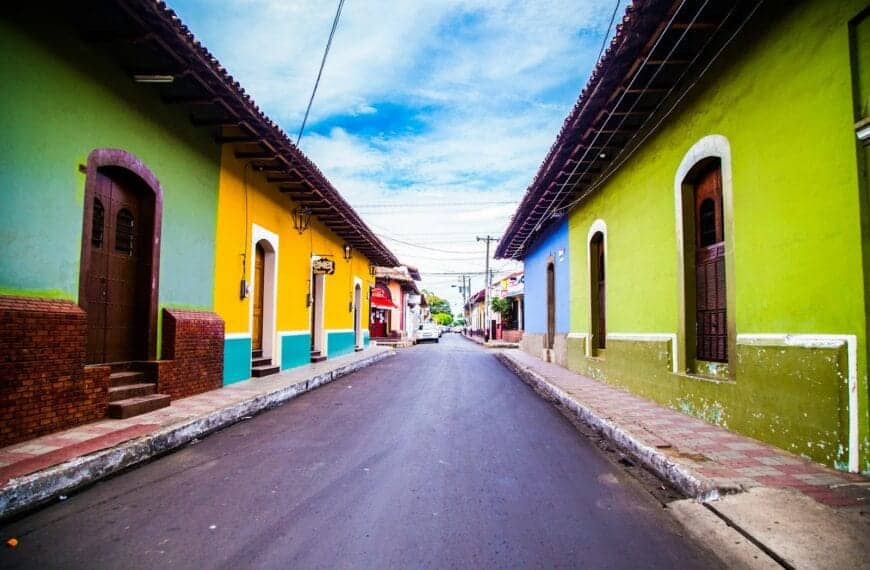Australia Travel Guide: Discover the Wild Beauty of the Land Down Under
Intro to Australia Travel Guide
Start planning your journey with our complete Australia Travel Guide — from outback adventures and rainforest escapes to coastal cities and Great Barrier Reef diving, this is a land where every region tells its own unforgettable story.
Australia tours let you explore the world’s oldest cultures, swim with marine life, and trek across deserts or wine valleys — all within a single trip.
Where to Go in Australia
Australian Capital Territory | New South Wales | Northern Territory | Queensland | South Australia | Tasmania | Victoria | Western Australia
💡Quick Facts:
Continent: Oceania
Country: Australia
Area: 7,692,024 km²
Population: ~26.9 million (2024 est.)
Density: ~3.5 people/km²
Capital: Canberra
Regions/Subregions: New South Wales, Victoria, Queensland, Western Australia, South Australia, Tasmania, Northern Territory, Australian Capital Territory
Language(s): English (official)
Currency: Australian Dollar (AUD)
Time Zones: Ranges from UTC+8 to UTC+10.5 (standard); Daylight saving in some states
Airports: SYD (Sydney), MEL (Melbourne), BNE (Brisbane), PER (Perth), ADL (Adelaide), DRW (Darwin), CNS (Cairns), HBA (Hobart)
Climate: Mostly arid to semi-arid; tropical in the north; temperate in the southeast
Known For: Great Barrier Reef, Uluru, Outback, wildlife (kangaroos, koalas), beaches, Aboriginal culture, Sydney Opera House
🛂Arrival Info:
Most travelers require an eVisitor or ETA (Electronic Travel Authority) to enter Australia.
Visa-free travel is not available — all nationalities (except New Zealand) must apply for a visa.
New Zealand passport holders can enter and stay indefinitely under a Special Category Visa.
Apply through the Australian Government Immigration Portal.
Tourist visas generally allow stays up to 90 days (varies by visa class).
💉Health Info:
Recommended vaccines: Hepatitis A, Hepatitis B, Rabies (for outdoor travelers), Typhoid, COVID-19
Check updates at the Australian Department of Health or CDC
No major disease outbreaks; healthcare is high-quality in all major cities
Public hospitals are excellent, and private facilities are abundant in urban areas
Travel insurance is strongly recommended — make sure it covers medical evacuation and remote care
✅ Check travel insurance options for travel emergencies, delays, and medical needs abroad — Get coverage here
✅ Stay Informed with Official Updates: WHO – International Travel & Health | CDC – Travel health updates
🚨Travel Advisory:
Refer to U.S. State Dept – Australia Travel Advisory
Generally ranked Level 1: Exercise Normal Precautions
Seasonal natural hazards: bushfires, cyclones, flooding in rural areas
Some remote outback regions require additional caution due to heat, limited access, and distance from help
✅ Stay Informed with Official Updates: US Travel Advisory | UK Foreign Travel Advice
📅Holidays:
Australia Day – January 26: National celebration
ANZAC Day – April 25: Military commemoration
Queen’s/King’s Birthday – June (date varies by state)
Christmas Day – December 25
Boxing Day – December 26
Note: Some states observe different holidays or dates for shared ones (e.g., Labour Day, Show Days)
💰Visitor Info:
Currency: AUD (Australian Dollar)
ATMs widely available; major cards accepted nearly everywhere
Tipping is optional, not expected — 10% for excellent service
Duty-Free Allowance:
Alcohol: 2.25 liters
Tobacco: 25 cigarettes
Goods up to AUD $900 (AUD $450 for travelers under 18)
See Australian Border Force – Duty-Free Info
✈️Airports:
Sydney Kingsford Smith (SYD) – Main hub, domestic + international
Melbourne Tullamarine (MEL) – Second largest, major global connections
Brisbane (BNE) – Gateway to Queensland and Great Barrier Reef
Perth (PER) – Western Australia hub
Adelaide (ADL) – South Australia’s main gateway
✅ Delayed or canceled flight? Check if you’re eligible for compensation
🚍Transport:
Drive on the left-hand side
International Driving Permit (IDP) required with most foreign licenses
Domestic flights common between major cities
Public transport varies: metro in Sydney/Melbourne, buses in most cities, long-distance trains like The Ghan and Indian Pacific
Uber, Ola, and taxis available in most urban centers
Avoid unlicensed taxis and beware of overland distances in remote areas
✅ Book reliable airport transfers and in-city rides in advance. Reserve your ride here
📶Connectivity:
Top SIM providers: Telstra, Optus, Vodafone
SIM cards widely available at airports, shops, supermarkets
eSIM support available for newer phones
Public Wi-Fi in airports, hotels, and some restaurants, but often slower in rural zones
✅ Stay connected abroad with affordable eSIM data packs. Get your eSIM here
📜Laws & Etiquette:
Legal drinking age: 18
Smoking banned in most indoor and public spaces
Respect Indigenous sites (e.g., don’t climb Uluru)
Casual attire is common, but modest clothing expected in churches or formal venues
LGBTQ+ travelers are welcomed; Australia legalized same-sex marriage in 2017
🛡️Emergency Info:
Emergency Number: 000 (police, ambulance, fire)
Find your embassy in Australia
Travel insurance is recommended — choose a plan with health + activity coverage — get coverage here
✅ Use embassy locator tools: Embassies Worldwide
🌦️Weather:
Australia spans multiple climate zones
Tropical north: Wet (Nov–Apr), Dry (May–Oct)
Temperate south: Warm summers (Dec–Feb), mild winters (Jun–Aug)
Desert interior: Hot, dry, extreme temperature shifts
Best time to visit:
North: May to October (dry season)
South: October to April (warmer weather)
✅ Stay prepared—check the weather forecast for your destination — Weather Forecast
Australia by Region – Where to Go
Australia is vast, and each state or territory has its own unique flavor, climate, and attractions. Here’s how to explore it region by region:
New South Wales
Sydney, Blue Mountains, Byron Bay
Home to iconic Sydney and its harbor, New South Wales blends coastal glam with rugged wilderness. Visit the Blue Mountains for misty hikes or head to Byron Bay for beach vibes and surfing culture.
Victoria
Melbourne, Great Ocean Road, Grampians National Park
Victoria is known for its artsy capital, Melbourne, plus coastal road trips and scenic mountain escapes. The Great Ocean Road features dramatic cliffs and koalas in the wild.
Queensland
Brisbane, Cairns, Great Barrier Reef, Daintree Rainforest
Tropical Queensland is a paradise for adventurers. Dive the Great Barrier Reef, hike the world’s oldest rainforest, or island-hop through the Whitsundays.
Western Australia
Perth, Margaret River, Broome, Kimberley
Remote and wild, WA is a land of red canyons, world-class surf, and epic coastlines. Discover white-sand beaches, whale sharks in Ningaloo Reef, and wine country near Perth.
South Australia
Adelaide, Barossa Valley, Kangaroo Island
A relaxed state with culinary flair, South Australia is perfect for wine tasting and wildlife watching. Kangaroo Island delivers rugged coastal views and nature sanctuaries.
Tasmania
Hobart, Freycinet National Park, Cradle Mountain
An island off the mainland, Tasmania charms with dramatic wilderness, colonial towns, and abundant hiking trails. It’s a haven for nature lovers and foodies alike.
Northern Territory
Darwin, Kakadu, Uluru, Alice Springs
Spiritual and raw, the NT is home to iconic outback landscapes and rich Aboriginal heritage. Visit sacred Uluru at sunrise or explore ancient rock art in Kakadu National Park.
Australian Capital Territory (ACT)
Canberra
Australia’s capital combines political heritage with nature parks and museums. Don’t miss the Australian War Memorial and galleries housing First Nations art.
Top Places to Visit in Australia
Cultural Capitals
- Sydney: Harbor Bridge, Opera House, Bondi Beach, and multicultural dining.
- Melbourne: Coffee culture, laneways, galleries, and a thriving arts scene.
- Canberra: National museums, embassies, and political history with parkland surroundings.
Nature Escapes
- Daintree Rainforest: A prehistoric jungle where the reef meets the rainforest.
- Cradle Mountain: Alpine hikes, glacial lakes, and unique Tasmanian wildlife.
- Kakadu National Park: Floodplains, crocodile cruises, and Indigenous rock art.
Historic Sites
- Port Arthur, Tasmania: A haunting look into Australia’s convict past.
- Sovereign Hill, Victoria: A gold rush heritage town turned interactive museum.
- Fremantle, WA: 19th-century streets and historic prisons on the Indian Ocean.
Islands & Coasts
- Whitsundays: Whitehaven Beach and luxury yacht sailing on turquoise seas.
- Kangaroo Island: Wild koalas, seals, and untouched beaches.
- Rottnest Island: Quokkas and car-free island biking near Perth.
How to Choose Where to Go in Australia
Australia is too large to cover in one trip. Choose based on your goals:
- Beaches: Head to Queensland’s coast or WA’s Ningaloo Reef for marine adventures.
- Cities + Culture: Pair Sydney or Melbourne with day trips to the Blue Mountains or Yarra Valley.
- Outback & Indigenous Heritage: Explore Uluru and the Red Centre or Kakadu’s sacred sites.
- Wine & Food: Barossa Valley in South Australia and Margaret River in WA are top picks.
- Nature: Tasmania offers jaw-dropping landscapes without long travel times.
For a well-rounded itinerary, consider flying into Sydney, exploring the east coast to Cairns, and then heading west or south.
How to Get Around Australia
Domestic Flights
With vast distances between cities, flying is efficient. Major carriers like Qantas, Jetstar, and Virgin Australia serve most routes.
Trains & Buses
- Long-distance rail: The Indian Pacific (Sydney–Perth) and The Ghan (Adelaide–Darwin) offer luxury rail experiences.
- Buses: Greyhound covers major routes, ideal for budget travelers.
Car & Camper Rental
A great option for road trips like the Great Ocean Road or outback adventures. Check for fuel stations in remote areas and drive on the left.
Local Transport
Urban areas have buses, trams (especially Melbourne), ferries (Sydney), and ride-hailing apps like Uber.
Travel Budget & Costs in Australia
- Budget: $60–$90/day — hostels, public transport, and groceries.
- Mid-range: $150–$250/day — 3-star hotels, car hire, local tours.
- Luxury: $300–$600+/day — boutique lodges, internal flights, fine dining.
Sample Prices:
- Coffee: AUD $4–$5
- Hostel bed: AUD $25–$40
- Intercity flight: AUD $70–$250
- Car hire: AUD $50+/day
- Museum entry: Often free or AUD $10–$25
Money-saving tips:
Use supermarket meal deals, take advantage of free city attractions, and bundle tours for discounts.
Best Time to Visit Australia
Australia’s seasons are opposite the Northern Hemisphere:
- Summer (Dec–Feb): Great for beaches but hot in the Outback.
- Autumn (Mar–May): Pleasant across most regions, fewer crowds.
- Winter (Jun–Aug): Best for the tropical north (NT, Queensland). Snow in the Alps for skiing.
- Spring (Sep–Nov): Wildflower blooms in WA and temperate weather.
Festival Timing:
- Sydney Mardi Gras (Feb/March)
- Melbourne Cup (Nov)
- Darwin Festival (Aug)
- Vivid Sydney Light Festival (May/June)
Must-See Experiences in Australia
- Snorkel the Great Barrier Reef — Swim among coral gardens and sea turtles.
- Watch the sunrise at Uluru — Sacred and unforgettable in the heart of the Outback.
- Drive the Great Ocean Road — One of the world’s most iconic coastal journeys.
- Hike Cradle Mountain — Alpine terrain, wombats, and mirror-like lakes.
- Explore Aboriginal rock art in Kakadu — Learn from ancient stories carved in stone.
- Stargaze in the Red Centre — Some of the clearest skies on Earth.
- Cruise Sydney Harbour at night — A glittering skyline and Opera House views.
- Taste Barossa Valley wines — Sample Shiraz and artisan produce.
- Walk with quokkas on Rottnest Island — Snap a selfie with Australia’s happiest animal.
Book immersive Australia tours and experience unforgettable things to do in Australia — from sacred Uluru sunrises and reef dives to wine trails and rainforest treks.
Best Travel Itineraries in Australia
7-Day Highlights (Sydney + Surrounds)
- 3 days in Sydney
- 2 days in Blue Mountains
- 2 days in Hunter Valley or Jervis Bay
10-Day East Coast Tropical Trail
- Brisbane → Noosa → Fraser Island → Whitsundays → Cairns
- Great for nature and reef lovers
14-Day Cultural Outback + Urban Mix
- Melbourne → Great Ocean Road → Adelaide → Uluru → Alice Springs → Sydney
- Mix of cities, road trip, and sacred landscapes
Local Cuisine & Culinary Experiences
- Meat Pies & Sausage Rolls: Aussie bakery staples.
- Lamingtons & Pavlova: Sweet desserts with historical rivalry.
- Barramundi: Grilled fish served across coastal regions.
- Kangaroo & Crocodile: Try them grilled at food markets or specialty restaurants.
- Avocado Toast & Flat Whites: Brunch culture at its finest in Melbourne.
- Bush Tucker: Learn Indigenous ingredients like wattleseed and finger lime.
- Wine Regions: Barossa Valley, Margaret River, and Hunter Valley for tastings.
Explore Aussie flavors on guided food tours, local markets, or vineyard lunches.
Travel Safety & Cultural Etiquette in Australia
- Safety: Australia is safe, but sun protection and wildlife awareness are essential.
- Scams: Minimal risk; stay cautious with online bookings.
- Hazards: Strong surf, bushfires (in dry season), jellyfish in northern waters.
- Etiquette:
- Respect Aboriginal culture and sacred sites.
- Tipping is optional but appreciated.
- Dress casual but modest in remote communities.
- English is spoken everywhere; a friendly “G’day” goes a long way.
Where to Go Next – Pair Australia with These Destinations
- New Zealand: Just 3 hours from Sydney; ideal for nature and adventure.
- Indonesia (Bali): A quick flight from Darwin or Perth for tropical R&R.
- Fiji: Island luxury with direct flights from Australia’s east coast.
- Singapore: Great stopover on your way to/from Australia with world-class airports and cuisine.
- Papua New Guinea: For remote jungle treks and fascinating tribal cultures.
Explore more:
- New Zealand Travel Guide
- Indonesia Travel Guide
- Fiji Travel Guide
- Papua New Guinea Travel Guide
Final Planning Checklist for Australia
- Finalize route: regions, domestic flights, and road trips
- Pre-book reef tours, Uluru visits, and accommodations during peak months
- Bring sunblock, insect repellent, and a reusable water bottle
- Download maps.me or Google Maps offline for remote zones
- Check visa requirements via Australia’s eVisitor or ETA systems
- Consider travel insurance with wildlife and remote coverage
- Pack for diverse weather — beachwear, hiking gear, and city attire
- Learn basic Aussie slang and local customs for smoother interactions
Explore Australia with confidence using our trusted tips, local insights, and region-by-region planning tools.
For more expert travel tips, practical strategies, and trusted tools — visit our Homepage and get inspired for your next trip.

